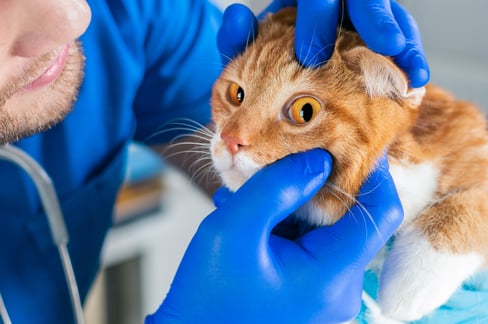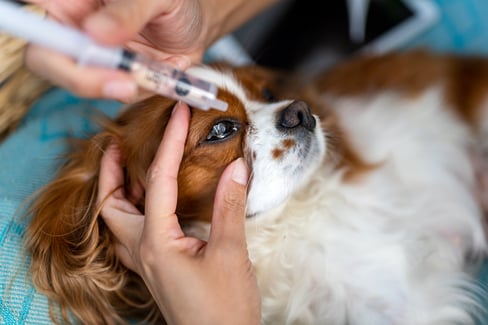Table of Contents
There’s nothing quite like the pure joy of a dog heading outside, nose to the ground, tail wagging like a metronome on hyperdrive, searching for that perfect> patch of grass to claim as their own. For dogs, sniffing and marking is less a chore and more a proud declaration: "I was here!"
But what happens when that once-loved bathroom break suddenly becomes a source of pain? Instead of sprinting to the door, your dog hesitates, confused and uncomfortable. That’s when a hidden culprit might be at play: a urinary tract infection (UTI).
Dog urinary infections are sneakier than you might think. Unlike a limping paw or a missing patch of fur, the signs can be subtle, and if left untreated, can open the door to even more serious health problems.
If your pup’s potty routine has gone from "business as usual" to "business avoided," don’t worry. We’re breaking down what causes urinary infections in dogs, the signs to watch for, and how to help your furry best friend feel like their happy, tail-wagging self again.
How Does a Dog Get a Urinary Tract Infection?
It’s normal to wonder, “Can a dog get a urinary tract infection?”
Dogs don’t have to worry about wiping back to front, so how does a dog get a urinary tract infection? Well, dogs get UTIs like humans do: from bacteria entering the urethra.
While UTIs aren’t nearly as common in dogs as in humans, dog urinary tract infections affect approximately 14% of dogs in their lifetime.
Dog urinary tract infections are one of many possible dog health complications and an important concern when learning how to care for a dog.
Causes of UTIs in Dogs
Dog urinary tract infections have several causes. They are most often caused by bacteria residing on the skin or hair surrounding a dog’s genitalia. Bacteria enter the external opening of the urethra, travel through the urethra, and enter the bladder.
While less common, dog urinary tract infections can be caused by viral or fungal infections.
Below is a list of what causes dog urinary tract infections:
- Poor hygiene
- Diet and hydration
- Urine retention
- Medical conditions
- Weak immune systems
- Incontinence
Poor hygiene
Poor hygiene is one of the easiest ways bacteria can enter the urethra and travel to the bladder. A dog that is poorly groomed will have more bacteria around its rear end and genitals than a dog that cleans itself or is bathed regularly.
Diet and Hydration
Improper diet and dehydration are frequent factors in dog urinary tract infections. Hydration is key for dog urinary tract health, as water and fluid help flush out bacteria and prevent urine retention. Diet also plays a role in dog urinary tract health, as diets high in grains and carbs increase the pH balance in urine.
Urine Retention
When it’s time to go, it’s time to go! Holding onto urine for extended periods also enables bacteria to grow inside the urethra.
Medical Conditions
How can a dog get a urinary tract infection through a medical condition? Bacteria play a significant role in aggravating or causing medical conditions that affect a dog’s urinary health.
The most common medical conditions affecting dog urinary tract infections include:
- Bladder stones
- Cushing’s Disease
- Diabetes
- Kidney disease
- Incontinence
- Obesity
Bladder stones are the most common medical condition affecting a dog’s urinary health. Urine retention and bacteria cause mineral crystals to form stones on the bladder's lining.
Weak Immune Systems
A weakened immune system due to a temporary or chronic illness can increase the likelihood of a dog urinary tract infection. A poor immune systems allow bacteria to migrate more easily and causes a slower response to infections.
Incontinence
The involuntary leakage of urine creates a perfect breeding ground for bacteria. Dogs with incontinence are more likely to have bacteria enter their urethra, causing a dog urinary tract infection.
Gender-Specific Risks
While vastly different in many ways, human and dog anatomies share certain similarities, including the organization of their bladders and reproductive spaces. This is why female dog urinary tract infections are more common than male dog urinary tract infections.
There are several main reasons why female dogs are more prone to dog urinary health complications:
- Short Urethra: The tube that carries urine out from the body is shorter and wider in a female dog, allowing bacteria to spread more easily.
- Closeness to Anus: Bacteria spread through fecal matter, like E. coli, migrates to the urethral opening.
- Recessed Vulva: The Shape of the vulva may promote the growth of bacteria.
- Hormonal Changes: Decreased estrogen level post dog spay surgery.
Can a Dog Get a Urinary Tract Infection After Being Spayed?
Female dogs can become more prone to dog urinary tract infections after a dog spay surgery.
When a female dog is spayed, her ovaries are removed, which causes a significant drop in estrogen levels. While we often think of estrogen as just a "reproductive hormone," it also plays a vital role in maintaining the health of the urinary tract.
Estrogen helps keep the urinary tissues thick, elastic, and strong. Without it, the lining of the urethra can become thinner and weaker over time, making it easier for bacteria to creep in and cause infections.
Another common post-spay issue is something called urethral sphincter mechanism incompetence (USMI). In simple terms, this means the muscles that help control urination can weaken, leading to small urine leaks or dribbles. These little leaks create the perfect environment for bacteria to thrive, especially when moisture gets trapped near the urethra.
In some cases, the changes are mild and may not cause major problems. In others, a spayed female dog might experience recurring UTIs, especially as she gets older.
Signs your spayed dog might have a UTI include:
- Frequent attempts to urinate with little success
- Straining or whining during urination
- Blood in the urine
- Licking around the urinary opening
- Accidents in the house
- Strong-smelling urine
With early detection, most UTIs can be easily treated with antibiotics. In some cases where hormonal changes are causing recurring issues, your veterinarian might suggest low-dose estrogen supplements or other strategies to strengthen the urinary tract and prevent future infections.
Spaying absolutely has huge health benefits, including preventing serious conditions like pyometra (a life-threatening uterine infection) and reducing the risk of certain cancers, but it's important to stay vigilant and support your pup’s urinary health post-surgery.
Male Dog Urinary Tract Infection
While female dogs tend to get urinary tract infections (UTIs) more often, male dogs aren’t immune. In fact, when a male dog develops a UTI, it can sometimes hint at a more complicated underlying issue, like bladder stones, prostate problems, or even a structural abnormality in the urinary tract. The most prevalent cause of male dog urinary tract infections are issues with the prostate gland. Dog neuter surgery can reduce the risk of UTIs by decreasing testosterone production and shrinking the prostate.
Because male dogs have a longer and narrower urethra compared to females, bacteria have a tougher road to travel. This means that when a male dog does end up with a urinary infection, it's often associated with an additional factor, making it easier for bacteria to gain a foothold. That’s why urinary issues in male dogs should always be taken seriously and checked out promptly.
Signs of Urinary Tract Infection in My Male Dog>
UTIs in male dogs can be sneaky at first. Some symptoms may be brushed off as “marking behaviour” or “just getting older,” but they’re worth a closer look. Here’s what to watch for:
- Frequent urination: Your dog may ask to go outside more often, or you might notice small puddles where he usually wouldn’t have accidents.
- Straining or difficulty urinating: He may take longer to pee, look uncomfortable, or even squat without producing much urine.
- Blood-tinged urine: Even a faint pinkish tinge in the urine is a red flag.
- Strong-smelling urine: A foul or unusually strong odor could signal infection.
- Licking the urethral area: Frequent licking around the penis can indicate irritation or pain.
- Whimpering or restlessness: If it hurts to urinate, some dogs will whine, pace, or seem distressed when trying to pee.
- Dribbling urine: A loss of bladder control or small urine leaks inside the house may occur.
- Changes in appetite or mood: Infections can make a dog feel crummy overall, leading to lethargy or loss of interest in food.
Symptoms of a Dog with a Urinary Infection
Early symptoms of a dog with a urinary infection include changes to urinary habits. What is usually a delightful experience—going outside and relieving themselves surrounded by nature—can cause apprehensive, reluctant, or stressful behaviour.
Common Signs of UTI in Dogs
Common signs of a dog urinary tract infection include frequent urination, and a significantly reduced level of enjoyment while getting to business.
The most common signs of UTI in dogs include:
- Frequent urination
- Small amounts of urine
- Straining while urinating
- Blood in urine
- Foul odour of urine
Refer to the chart below for a list of warning signs for dog health urinary tract infection.
|
Dog Urinary Tract Infection Symptom |
Description |
|
Frequent Urination |
|
|
Small Amounts of Urine |
|
|
Straining While Urinating |
|
|
Blood in Urine |
|
|
Foul Odour of Urine |
|
Frequent urination and small amounts of urine are the most prevalent signs of dog urinary tract infections. The reason for frequent urination is that the infection causes an irritated bladder and urethra, making the bladder feel full and the perceived need to urinate, with only drops coming out.
Behavioural and Physical Changes of Dog Urinary Tract Infection
In addition to physical warning signs, you might notice behavioural changes when your dog has urinary tract infections. Both male and female dogs with urinary tract infections will display increased licking of the genital area. This can present as biting and aggressive grooming of the urethra and surrounding area to relieve the internal irritation.
You will likely also notice signs of discomfort or whining when urinating. Whincing and panting are key indicators of pain while urinating, as are shaking back legs as they strain to pee.
When to See a Veterinarian for a Dog Urinary Tract Infection
If you’re wondering when to see a veterinarian for a dog urinary tract infection, it is critical to act promptly if you suspect any issues with your dog's urinary health. If left untreated, a dog urinary tract infection can spread to other internal organs, leading to kidney infections, bladder stones, and other medical conditions.
It can be challenging to know how to distinguish a dog urinary tract infection from other health issues. Many medical conditions affecting a dog’s urinary health make them more susceptible to urinary tract infections, and vice versa.
Medical conditions presenting similar symptoms of dog urinary tract infections include:
- Bladder Stones: Similar symptoms with more severe pain when urinating.
- Cushing’s Disease: Causes increased thirst and urination along with hair loss and skin infections.
- Diabetes: Causes increased thirst and urination without pain during urination.
- Urinary Tract Tumours: Can present with blood in the urine.
Dog UTI symptoms are usually limited to changes and complications with urination. If you notice your dog has additional symptoms like lethargy, vomiting, weight loss, hair loss, or other physical changes, it is likely that a more serious medical condition is present.
The only way to confirm whether a dog has a urinary tract infection is through a urinalysis performed by a veterinarian.
Diagnosing a Dog Urinary Tract Infection
Unlike sudden limping, injuries, wounds, or other physical medical conditions, a dog urinary tract infection cannot be diagnosed with a physical examination alone. It requires diagnostic lab tests, including a urinalysis, to confirm the presence of bacteria.
Veterinary Testing
Veterinary testing is critical when you suspect a urinary tract infection. Dog urinary tract infections usually require antibiotics like amoxicillin or penicillin, which require a medical prescription.
The steps your veterinarian will take when diagnosing a urinary tract infection in a dog include:
- Medical History Review
- Physical Examination
- Urinalysis
- Urine Culture and Sensitivity
- Additional Diagnostic Tests
Refer to the chart below for a breakdown of each step of diagnosing a dog urinary tract infection.
|
Diagnostic Step |
Description |
|
Medical Review |
|
|
Physical Examination |
|
|
Urinalysis |
|
|
Urine Culture and Sensitivity |
|
|
Additional Diagnostic Tests |
|
If your vet suspects deeper concerns about a dog's urinary tract infection, they might order bloodwork to test for diabetes or kidney disease or ultrasounds and X-rays to detect abnormalities like bladder stones and tumours.
Underlying Health Conditions
While a dog urinary tract infection isn’t a major health concern, frequent UTIS can indicate a more serious health concern.
There are two types of urinary tract infections in dogs:
- Simple or Uncompolicated (sporadic cystitis)
- Complicated or Recurrent
Refer to the chart below for a comparison of these different types of dog urinary tract infections:
|
Simple or Uncomplicated |
Complicated or Recurrent |
|
|
Complicated or recurrent UTIs in dogs typically indicate an underlying health condition. Recurrent dog urinary tract infections that occur within six months of completing a UTI treatment can be a reinfection, caused by a different strain of bacteria, or a relapse, caused by the same species of bacteria.
Dog urinary tract infections are commonly mistaken for a bladder infection or kidney disease.
The chart below compares a dog's urinary tract infection to a bladder or kidney infection.
|
Condition |
Location |
Symptoms |
|
Dog Urinary Tract Infection |
Urethra, Bladder, and potentially Kidneys |
|
|
Dog Bladder Infection |
Bladder |
|
|
Dog Kidney Infection |
Kidneys |
|
Treatment for Dog Urinary Tract Infections
If you notice your dog is in pain while peeing, the good news is that treatments for dog health urinary tract infections are fairly straightforward! There are options for both veterinary treatments and managing the symptoms of a dog urinary tract infection at home.
Veterinary Treatments for Dog and Urinary Tract Infection
Getting veterinary treatment for dog urinary tract infections is pretty standard. After a urinalysis and urine culture test, your vet will recommend an antibiotic to treat the infection. Depending on the strain of the bacteria and factors like your dog's age, weight, and health, your vet will prescribe the most suitable antibiotic to treat a dog urinary tract infection.
The three most common antibiotics for dog urinary tract infections include:
- Amoxicillin: The most commonly prescribed antibiotic.
- Clavamox (amoxicillin-clavulanic acid): Covers a broader range of bacterial infections.
- Enrofloxacin (Baytril):A fluoroquinolone used for resistant infections or when a dog has already had antibiotics prescribed recently.
Your vet might also recommend pain relief and anti-inflammatory treatments for a dog with a urinary tract infection. NSAIDs (Non-steroidal anti-inflammatory drugs) are usually prescribed to treat dog urinary tract infection pain.
At-Home Care and Natural Remedies
If you act early upon the first signs of a dog urinary tract infection, you might be able to manage the infection successfully at home.
At-home care and natural remedies for dog urinary tract infections include:
- Improved diet
- Increase hydration
- Dog supplements
- Dog probiotics
The simplest way to treat a dog urinary tract infection at home is making hydration and diet adjustments for dog urinary health. Encourage regular water intake to help flush out the urinary infection.
You can easily change your dog’s diet by adding foods with hydrating ingredients and nutritious properties. A raw dog food diet is rich in moisture, which can increase hydration and help flush out urine. Raw food diets also contain digestive enzymes and probiotics that can help support dog urinary health.
There is evidence to suggest that cranberry supplements and probiotics are effective for dog urinary tract health. Similarly to how they improve human urinary tract infections, cranberry supplements work for dog urinary tract infections by preventing bacteria from sticking to the lining of the bladder and the urinary tract.
Choosing the best dog probiotics can help improve the recovery of a dog urinary tract infection by helping to support a healthy gut and digestive system.
The anti-inflammatory properties in glucosamine for dogs can reduce inflammation and irritation in the bladder. Studies have also shown oral chondroitin intake has a potential increased benefit at reducing dog urinary tract infections.
TRI-ACTA for Pets is a joint supplement for dogs, containing a potent blend of 100% active ingredients including glucosamine, chondroitin, and MSM (methylsulfonylmethane). It can easily be added to your dog's food to support joint health and other health conditions.
TRI-ACTA for Pets
A proactive approach for developing and younger adult pets to maintain optimal joint health mobility, minimize inflammation and fend off age-related ailments.

Can a Dog Get Better from a Urinary Tract Infection Without Antibiotics?
Dog urinary tract infection recovery without antibiotics depends on whether your dog has a mild UTI or a more severe case. Some dog urinary tract infections can be flushed out with proper diet, hydration, and natural treatments. In contrast, UTIs caused by certain bacteria, or an infection that has spread to the bladder or kidneys, will require antibiotics.
Preventing Future UTIs in Dogs
As a dog owner, you’ll know that illness and injuries are bound to happen. While you can’t always prevent a dog urinary tract infection, there are preventative measures you can take to reduce the risks.
Hygiene and Lifestyle Changes
The easiest way to prevent future dog urinary tract infections is to improve hygiene and lifestyle changes, such as proper grooming and regular bathroom breaks.
Hygiene and lifestyle changes to prevent dog urinary tract infections include:
- Allow regular bathroom breaks to prevent urine retention.
- Bathe your dog regularly, especially the genital area.
- Ensure proper grooming to prevent bacterial accumulation.
- Increase water intake to flush bacteria.
- Choose a nutritious diet to support the immune system.
A Diet dog food is an excellent choice to ensure your dog’s food has a healthy balance of nutrients, vitamins, and minerals while still helping to control your dog’s weight, as an overweight pup is more susceptible to a variety of health conditions.
When making changes to your dog’s diet, consider these tips:
- Add chicken or beef broth to kibble to increase water intake.
- Implement wet food rather than solely dry kibble.
- Choose foods with Omega-3 fatty acids.
- Consider the benefits of a raw dog food diet.
Getting Back to Business after a Dog Urinary Tract Infection
Once your pup is clear, it’s time to get back to business after a dog urinary tract infection. While you can’t prevent every dog urinary tract infection from occurring, you can take appropriate steps to maintain optimal dog urinary health.
Choosing the right pet supplements to support your dog is an excellent way to be proactive for dog urinary tract infections, and other health conditions like arthritis and joint pain.
Purchase TRI-ACTA online or learn where to buy at a store near you.
TRI-ACTA H.A. for Pets
Our maximum strength formula is optimally designed to accelerate the formation of cartilage, minimize inflammation, expedite the healing process, and improve joint conditions.
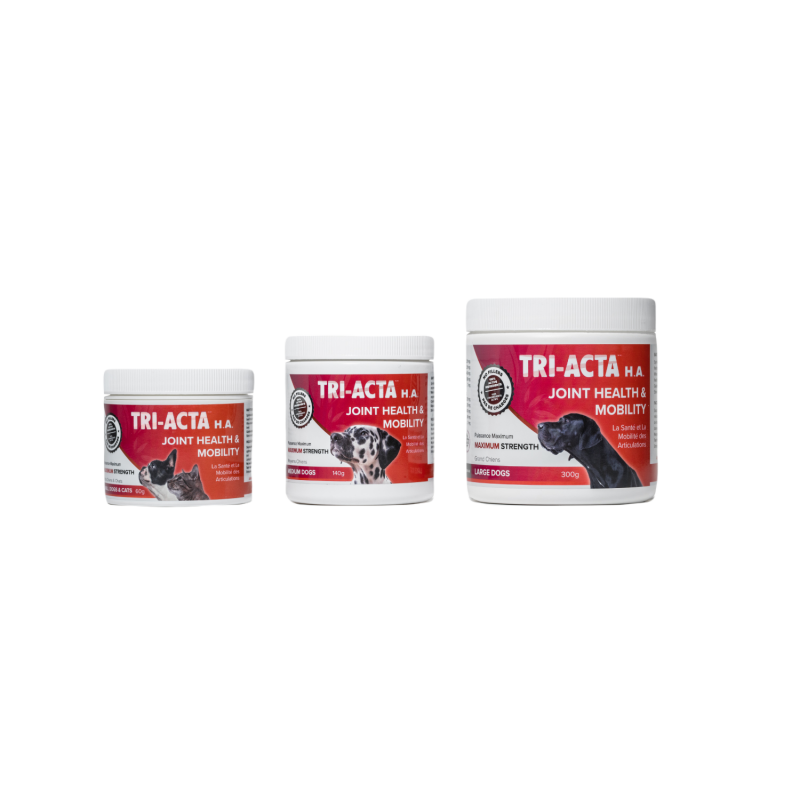
Newsletter Signup
Subscribe to our newsletter to receive the latest news and exclusive offers.
.jpg?height=2000&name=Cliick_Integricare-DISPLAY-REVISEDV2%20(1).jpg)
Proactive & Therapeutic Joint Supplements
When given daily, Integricare joint supplements recover bone and joint injuries faster and help prevent mobility injuries from happening in the first place.

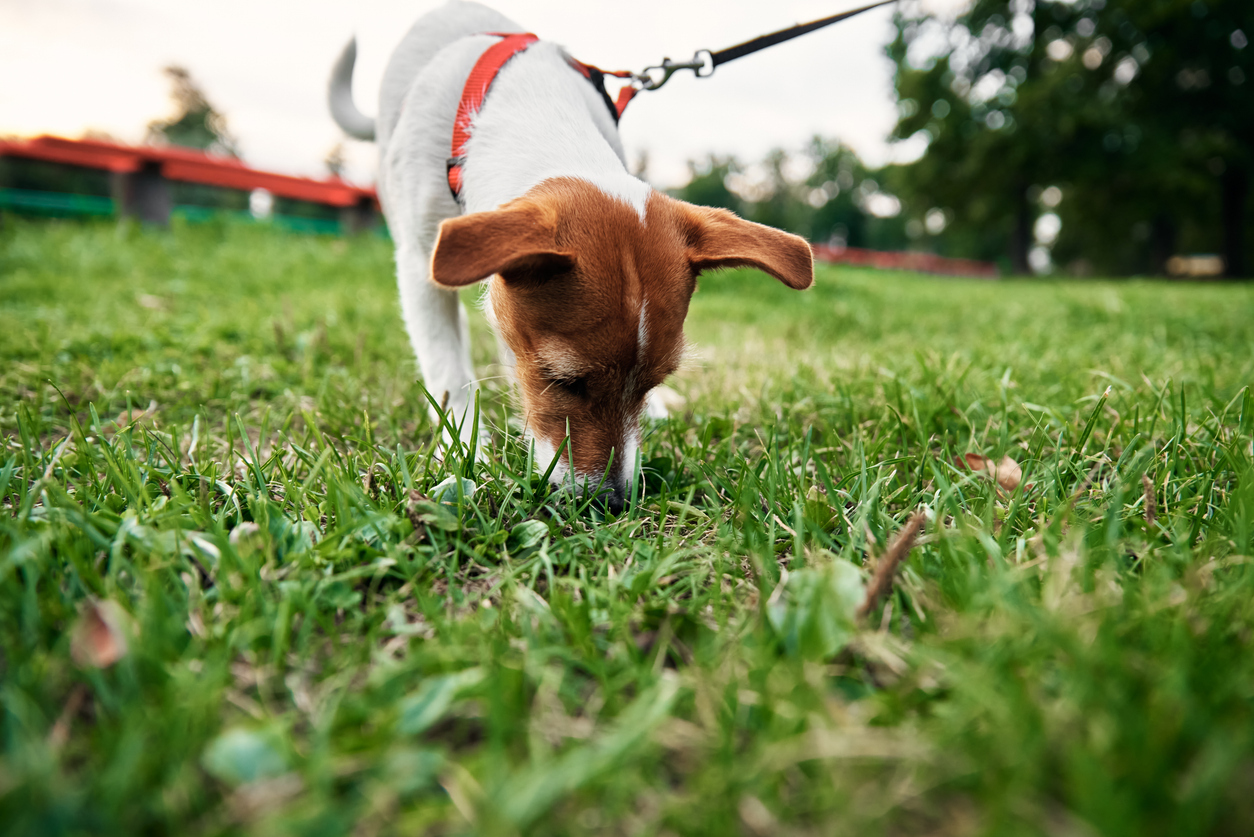



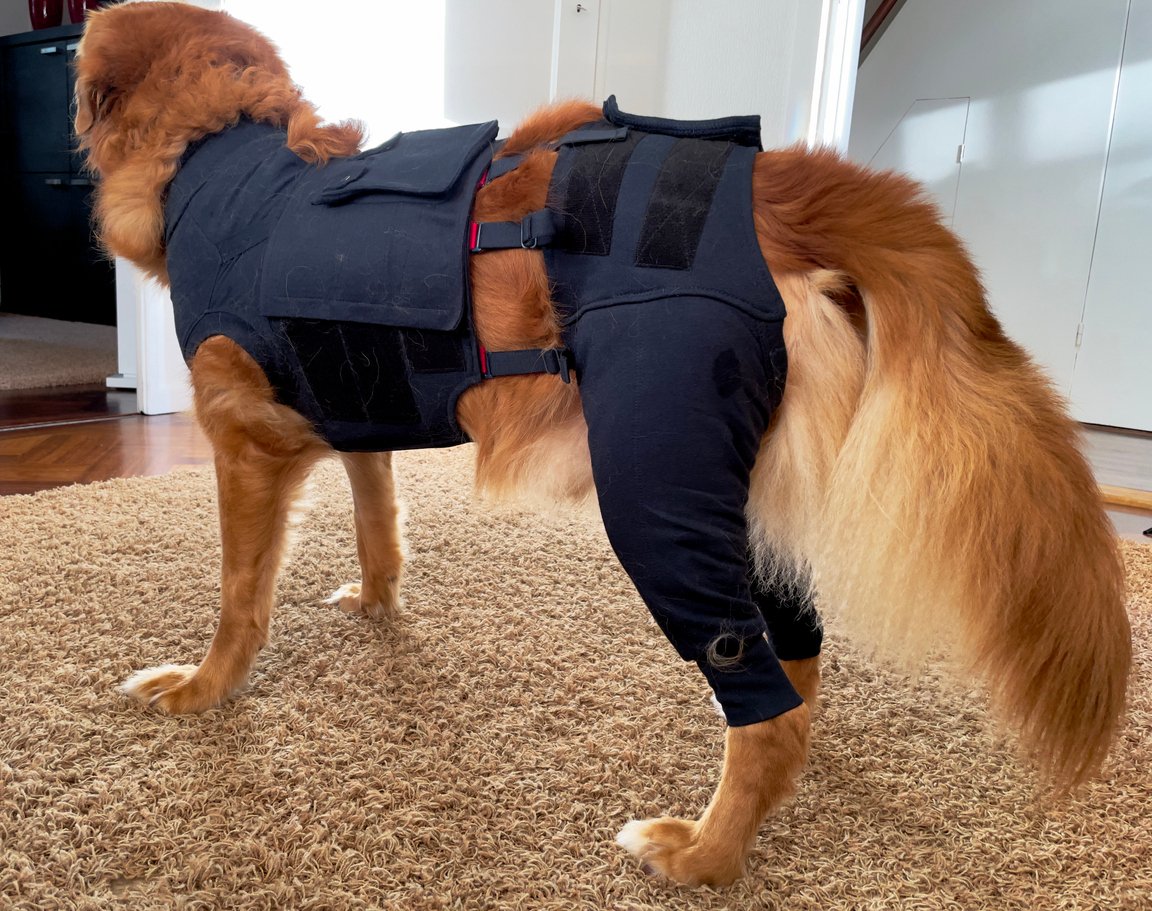


.jpg?width=488&height=325&name=dog-paw-infection%20(1).jpg)
